An Iranian sculptor brings his art to the river, beaches—and parks.
Landscape Architecture: The magazine of the American Society of Landscape Architecture 6/2008
Ahmad Nadalian’s work is like a synaptical charge between the Paleolithic cave art and Ancient Persia. He works with directly the earth, primarily in sand and stones on the shores or shallow pools of rivers, ponds, and streams. He can often be seen near the Haraz River in the village of Poloor, approximately 65 kilometers north of Tehran, wearing s wide-brimmed straw hat, carving impressions of fish, human hands and feet, river goddesses, and animals into rocks beneath the surface of the water. From 2000-2001, Nadalian did his Hazar River project where numerous animals, fish, and human signs appeared along the course of the river, thus suggesting an allegory over time that may have been done centuries ago, but in fact were carved in postmodern times.
In addition to receiving a degree from the University of Tehran in the eighties, Nadalian went on to receive a doctorate from the University of Central England.
He is well versed in computer technology and believes the most viable and effective way of transmitting his message as an artist is through digital displays, the Internet, and his own extensively designed web sites, www.riverart.net and www.nadalian.com.
French artist Yves Klein felt that art was somewhere between the ancient world and the future. A similar statement could be made about Nadalian, except that his forms appear as simulacra of a pre-linguistic culture, in fact, as true signs reiterating something about our present moment. One of his titles is “The River Still Has Fish” – meaning that, in contrast to Paleolithic times, the threat of pollution is changing the rivers of the world in a way that is threatening to all species on Earth.
One could say that Nadalian’s real studios are the rivers of the world. He travels inexhaustibly from one place to another carving his petroglyphs as human traces into the rocks of riverbeds, oceans, and ponds. He has been in Asia, Africa, Australia, Europe, the United Kingdom, Russia, Scandinavia, Uzbekistan, and the jungle rivers of South America. I remember in Venice during the month of August 2003, Nadalian would awaken at the crack of dawn, put on a knapsack full of carving tools and his perennial straw hat, and proceed to a secret alcove somewhere at the end of the Lido. He left the hotel at dawn because this is when the tide was down, which facilitated carving on the rocks that eventually the crashing waves would conceal. In addition to carving rocks – many of which are done on small flat stones that he hides in wilderness places — Nadalian also carves fish on spools of hard stone, which are then rolled out using a long stick on the surface of wet sand. The result is a myriad harvest of fish that adorn the beachfront. Eventually, of course, the tide will wash over them as well.
As a result of an invitation to the United States in the Spring 2007, Nadalian spent most of his week in New York not looking at galleries and museums, but carving stones in Central Park. Part of his concept is not to make the signs appear too obvious. His work does not shout out loud. Instead, his fish and animal signs are nearly hidden, often difficult to find. The overall point of the work is to deliver signs from his own Persian heritage by carving them into what today we call the “natural” environment. The artist hopes that people will discover them and, in the process, begin to reflect on the environmental and cultural signification they express. Nadalian’s work is a kind of a combined Earth and Process art, at least in Western terms. Yet he is also within the context of Postmodernism by returning us to an era when language did not exist other than as signs, an era when there were no urban monuments and no public art in city squares. There was only the earth on which we trod and the satisfaction of knowing what had to be done each day.
See also: Sculpture Magazine (Vol. 27, No. 2) March 2008
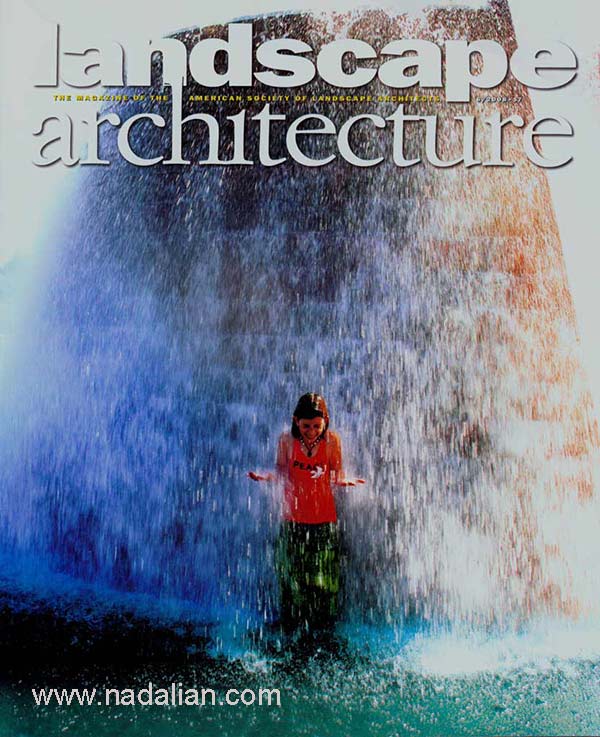
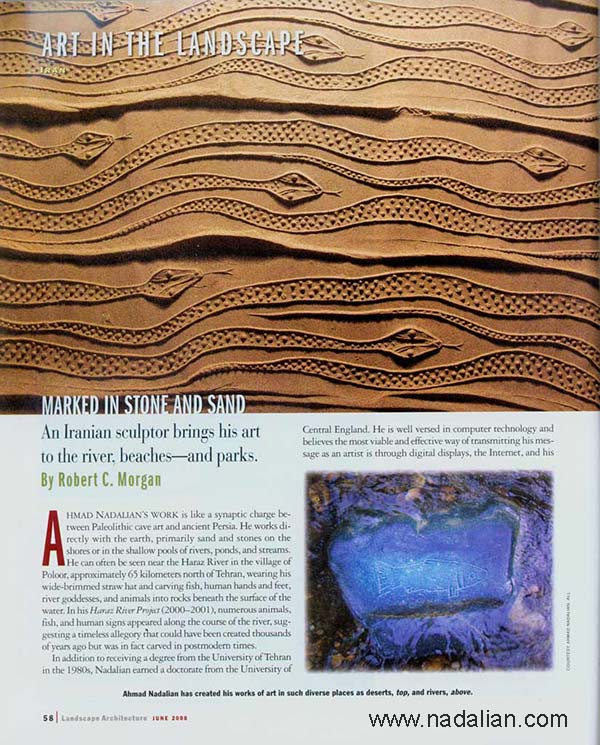
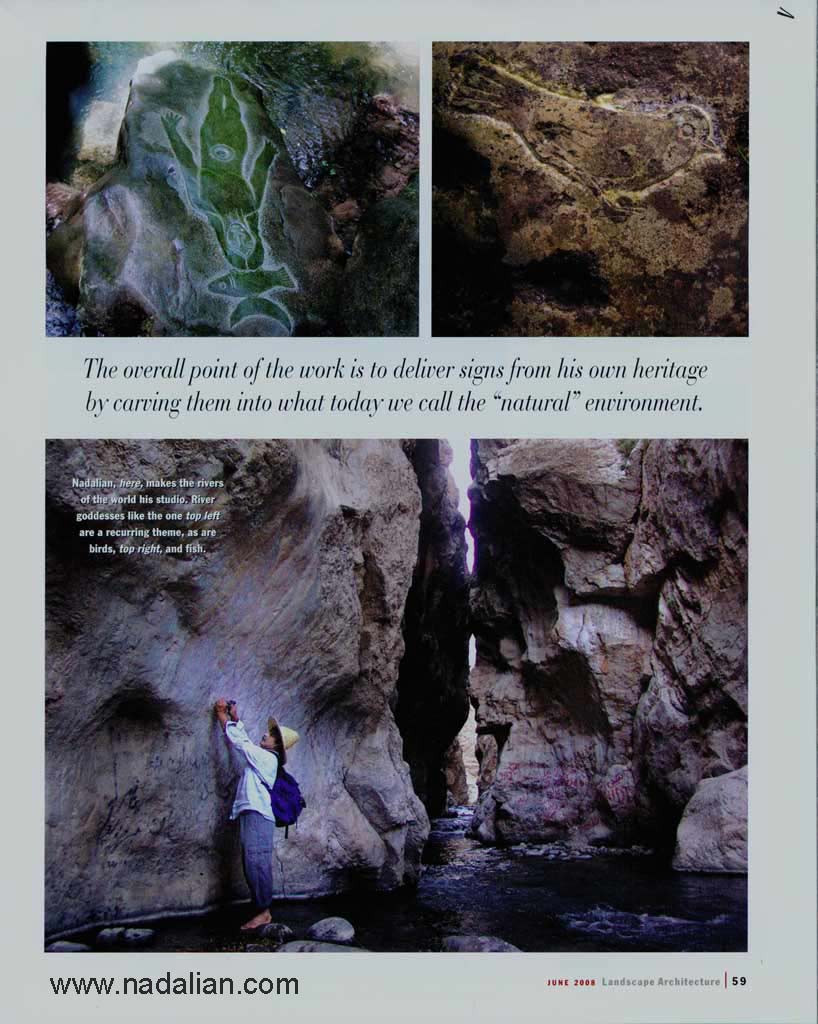
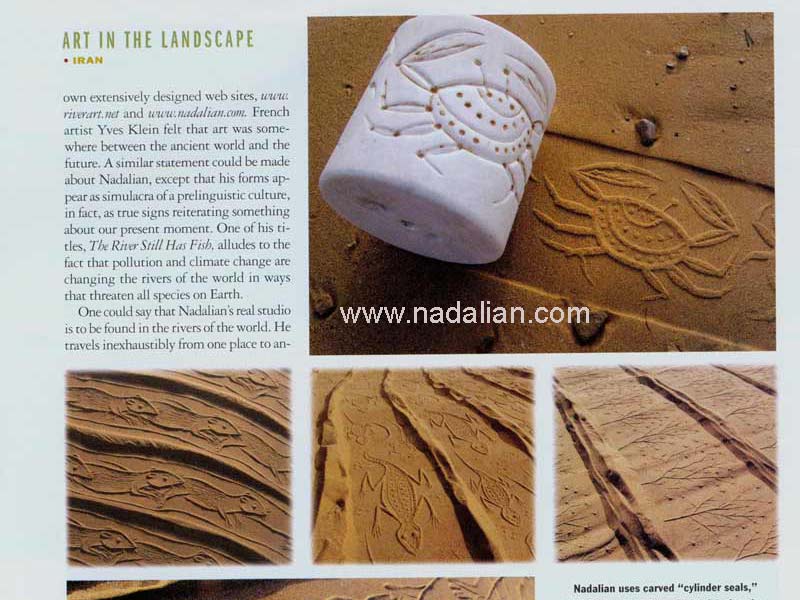
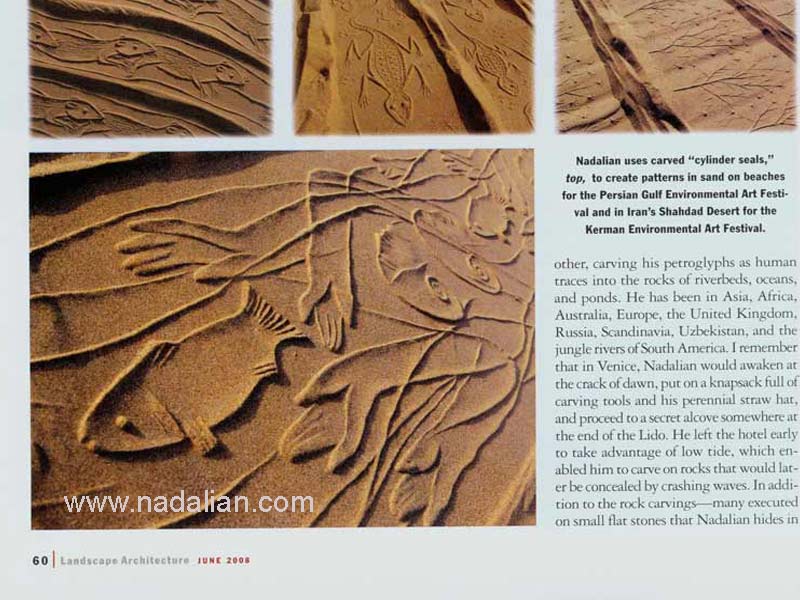
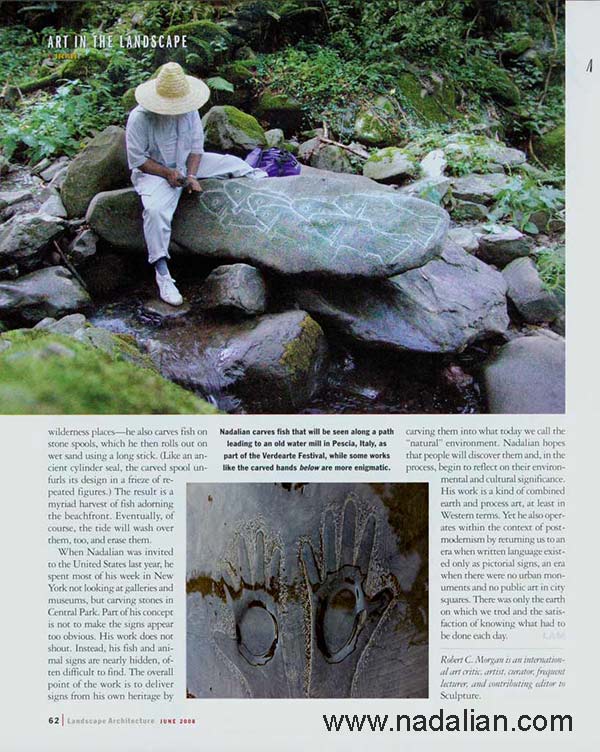
Robert C. Morgan to Nadalian 2006
“I was so impressed with your concept, working at low tide in the early mornings to carve signs that during the day would be concealed. It calls into question so much about time, history, language, meaning, and sculpture.”
“I have great respect for what you are doing and have already mentioned how taken I was by your work in Venice in 2003. The idea of working with primitive signs or basic ritualistic signs that hold universal meaning in the Jungian sense is very important, a necessary and vital aspect of art today.”
Professor Robert C. Morgan Ph.D.
Sun, 2 Apr 2006
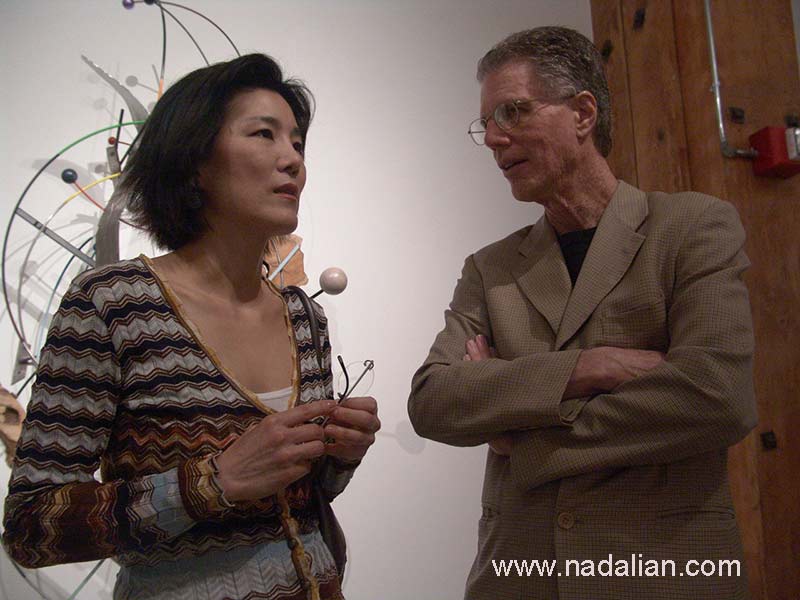
ROBERT C. MORGAN
Curriculum Vitae (Narrative)
He is an international art critic, artist, curator, frequent lecturer, and Contributing Editor to Sculpture. He received his M.F.A. from the University of Massachusetts, Amherst in 1975 and his Ph.D. from New York University in 1978. Dr. Morgan is Professor of the History and Theory of Art at the Rochester Institute of Technology. He has taught at Barnard College, Columbia University, the University of Rochester, Pratt Institute, and the School of Visual Arts, New York.
In addition to a consistently full teaching load, he has written and published over 1000 articles and reviews in more than 50 magazines and professional journals. His essays have been translated into more than a dozen languages. In addition, he has authored books, catalogs and monographs on numerous contemporary artists in various countries. His book on the American Conceptualist Robert Barry was published by Karl Kerber Press in Bielefeld, Germany (1986). Haim Steinbach was published by the Musee d’Art Contemporain, Bordeaux (1988). Duchamp, Androgyny, Etc, was published by Editions Antoine Candau in Paris (1990). A Hans Bellmer Miscellany was published by Baum/Malmburg in Malmo (Sweden) in 1993. His book, Bernar Venet: Work, 1961 -1971, was published by Editions des Cahiers intempestifs in St, Etienne, France as a bilingual edition (1999).
His books published in the United States include Commentaries on the New Media Arts , Umbrella Associates (1992); After the Deluge: Essays on the Art of the Nineties, Red Bass Publications (1993), Conceptual Art: An American Perspective, McFarland (1994); Art into Ideas: Essays on Conceptual Art (Cambridge University Press, 1996), Between Modernism and Conceptual Art (McFarland, 1997): and The End of the Art World (Allworth Press, 1998) A critical anthology on Gary Hill (2000) was recently published by Johns Hopkins University Press. A collection of Morgan’s essays, entitled El Fin del Mundo del Arte, were published by Eudeba in conjunction with the Centro Cultura Rojas at the University of Buenos Aires (1998). Another volume of his lectures, entitled Duchamp y los artistas contemporaneous postmodernos, was published by Eudeba in 2000. He is co-author of Dorothea Tanning (Braziller, 1995). An anthology of criticism on the conceptual artist Bruce Nauman (Johns Hopkins University Press) and an edited volume of the late writings by the critic Clement Greenberg (University of Minnesota Press) are forthcoming in 2002.
http://www.kazmaslanka.com/morgan/morgan.html

In the middle of March 2007 the American art critic and historian Robert C. Morgan was traveling in Iran. I accompanied him when he traveled to Isfahan. During this two-day excursion, I was able to ask him a variety of questions and learn a lot about contemporary art in the USA. I very much enjoyed our conversations and dialogue together.
While staying in New York City, I was also invited for a meal by Robert C. Morgan. He cooked fish, and we enjoyed dinner at his apartment. He told me “You have carved many fish, you need fish”.
